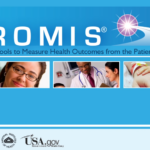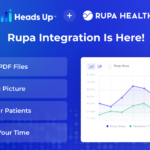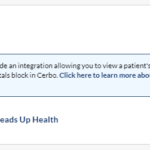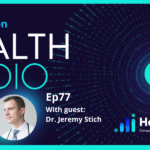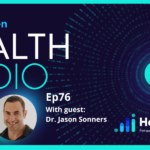by Dr John Limansky | Jul 3, 2023 | Basic Lipid Panel, Cholesterol, Lipid Panel, Primary Health Markers, Weight Loss Markers
LDL is one of the components in the basic lipid panel. The basic lipid panel is a routine screening test that measures the amount of lipids (or fats) that are present in the blood. The two most important lipids are cholesterol and triglycerides. Our bodies use these as cellular building blocks as well as a source of energy. Abnormal levels may lead to a build-up of cholesterol “plaques” within blood vessel walls, which cause the vessels to harden in a process called atherosclerosis. Atherosclerosis, when present, significantly increases your risk of developing cardiovascular disease (CVD). The basic lipid panel provides valuable information and when combined with other blood tests and risk factor assessment (age, smoking status, family history, etc.) it guides healthcare providers in their treatment recommendations.
The basic lipid panel includes total cholesterol, which is an estimate of the body’s entire cholesterol content, low-density lipoproteins (LDL, or the “bad” cholesterol), high-density lipoproteins (HDL or “Good” Cholesterol), as well as triglycerides. Other subtypes of lipids are often reported as well.
by Dr John Limansky | Jul 3, 2023 | Basic Lipid Panel, Lipid Panel, Primary Health Markers
Triglycerides are one of the components of the basic lipid panel. The basic lipid panel is a routine screening test that measures the amount of lipids (or fats) that are present in the blood. The two most important lipids are cholesterol and triglycerides. Our bodies use these as cellular building blocks as well as a source of energy. Abnormal levels may lead to a build-up of cholesterol “plaques” within blood vessel walls, which cause the vessels to harden in a process called atherosclerosis. Atherosclerosis, when present, significantly increases your risk of developing cardiovascular disease (CVD). The basic lipid panel provides valuable information and when combined with other blood tests and risk factor assessment (age, smoking status, family history, etc.) it guides healthcare providers in their treatment recommendations.
The basic lipid panel includes total cholesterol, which is an estimate of the body’s entire cholesterol content, low-density lipoproteins (LDL, or the “bad” cholesterol), high-density lipoproteins (HDL or “Good” Cholesterol), as well as triglycerides. Other subtypes of lipids are often reported as well.
by Dr John Limansky | Jul 3, 2023 | Cholesterol Ratios, Lipid Panel
The Total Cholesterol to HDL ratio is one indicator that assesses an individual’s risk of developing cardiovascular disease. The ratio is calculated by dividing total cholesterol by HDL, which are both components of the basic lipid panel. HDL collects cholesterol from various tissues of the body and transports it to the liver for removal. Higher HDL levels are more desirable because the more HDL that’s available, the more atherogenic cholesterol that is removed.
High HDL levels in the presence of normal total cholesterol results in a lower ratio, whereas low HDL levels in the presence of high total cholesterol suggest the opposite. This ratio is one of the strongest predictors of atherogenesis, just behind non-HDL cholesterol.
by Dr John Limansky | Jul 3, 2023 | Basic Lipid Panel, Cholesterol, Lipid Panel
Non-HDL cholesterol is calculated by subtracting HDL from total cholesterol. Non-HDL better depicts the amount of atherogenic, or “bad” cholesterol circulating in the body. In addition to LDL, non-HDL includes very low-density lipoproteins (VLDLs) and remnant lipoproteins, which are significant contributors to atherosclerosis.
Non-HDL is not always necessary to report but becomes particularly useful in certain circumstances. For example, the total cholesterol value includes both HDL and LDL. An elevated HDL in the presence of low/normal LDL can make the total cholesterol value appear elevated. However, the non-HDL is normal in this case, which suggests that HDL was responsible for the increased total cholesterol value.
Secondly, non-HDL is important when triglyceride levels are elevated, which is common in conditions like diabetes, morbid obesity, and other metabolic disorders. HDL and LDL may be normal in this case, but because VLDL is elevated, the non-HDL value is also elevated. Relying solely on LDL might lead to mislabeling high-risk patients as low-risk.
by Dr John Limansky | Jul 3, 2023 | Basic Lipid Panel, Lipid Panel, Primary Health Markers, Weight Loss Markers
HDL is one component of the basic lipid panel. The basic lipid panel is a routine screening test that measures the amount of lipids (or fats) that are present in the blood. The two most important lipids are cholesterol and triglycerides. Our bodies use these as cellular building blocks as well as a source of energy. Abnormal levels may lead to a build-up of cholesterol “plaques” within blood vessel walls, which cause the vessels to harden in a process called atherosclerosis. Atherosclerosis, when present, significantly increases your risk of developing cardiovascular disease (CVD). The basic lipid panel provides valuable information and when combined with other blood tests and risk factor assessment (age, smoking status, family history, etc.) it guides healthcare providers in their treatment recommendations.
The basic lipid panel includes total cholesterol, which is an estimate of the body’s entire cholesterol content, low-density lipoproteins (LDL, or the “bad” cholesterol), high-density lipoproteins (HDL or “Good” Cholesterol), as well as triglycerides. Other subtypes of lipids are often reported as well.
by Dr John Limansky | Jun 8, 2023 | Basic Lipid Panel, Cholesterol, Lipid Panel, Uncategorized
ng_dsp1}
